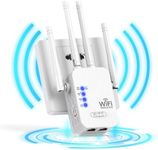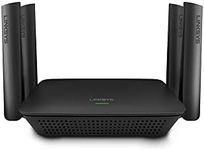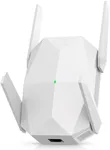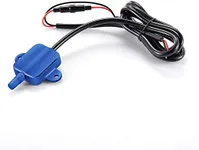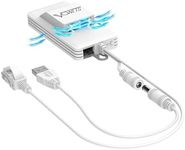Buying Guide for the Best WiFi Range Extenders With Ethernet Ports
When choosing a WiFi range extender with Ethernet ports, it's important to understand how these devices work and what features to look for to ensure you get the best performance for your needs. WiFi range extenders help to boost the signal of your existing wireless network, allowing you to enjoy a stronger and more reliable connection in areas where the signal is weak. Ethernet ports on these devices provide the added benefit of a wired connection, which can be more stable and faster than wireless connections. Here are some key specifications to consider when selecting a WiFi range extender with Ethernet ports.WiFi StandardsWiFi standards refer to the technology used by the extender to communicate with your router. The most common standards are 802.11n, 802.11ac, and 802.11ax. 802.11n is older and slower, suitable for basic internet browsing and small households. 802.11ac offers faster speeds and better performance, ideal for streaming and gaming. 802.11ax, also known as WiFi 6, is the latest standard, providing the highest speeds and best performance, perfect for large households with multiple devices. Choose a standard that matches your internet usage and the number of devices in your home.
Frequency BandsWiFi range extenders operate on different frequency bands, typically 2.4 GHz and 5 GHz. The 2.4 GHz band offers a longer range but slower speeds, making it suitable for basic tasks like browsing and email. The 5 GHz band provides faster speeds but a shorter range, ideal for high-bandwidth activities like streaming and gaming. Dual-band extenders support both frequencies, allowing you to balance range and speed. If you have a mix of activities and devices, a dual-band extender is a good choice.
Ethernet PortsEthernet ports on a WiFi range extender allow you to connect wired devices directly to the extender, providing a more stable and faster connection than wireless. The number of Ethernet ports can vary, with some extenders offering one port and others offering multiple ports. If you have several devices that require a wired connection, such as gaming consoles, smart TVs, or desktop computers, look for an extender with multiple Ethernet ports. Consider your specific needs and the number of devices you plan to connect.
Coverage AreaThe coverage area of a WiFi range extender indicates how far the device can extend your network's signal. This is usually measured in square feet. Smaller extenders may cover up to 1,000 square feet, suitable for small apartments or single rooms. Larger extenders can cover 2,000 square feet or more, ideal for larger homes or multiple floors. Assess the size of the area you need to cover and choose an extender that can provide adequate coverage for your space.
SpeedThe speed of a WiFi range extender is measured in megabits per second (Mbps) and indicates how fast data can be transmitted. Basic extenders may offer speeds up to 300 Mbps, suitable for light internet use. Mid-range extenders can provide speeds between 600 and 1200 Mbps, ideal for streaming and online gaming. High-end extenders offer speeds of 1500 Mbps or more, perfect for heavy internet use and multiple devices. Consider your internet activities and choose an extender with a speed that matches your needs.
Ease of SetupEase of setup refers to how simple it is to install and configure the WiFi range extender. Some extenders come with a user-friendly app or web interface that guides you through the setup process, while others may require more technical knowledge. Look for extenders with features like WPS (WiFi Protected Setup) buttons, which allow you to connect the extender to your router with a single press. If you're not tech-savvy, choose an extender with straightforward setup instructions and support.
Additional FeaturesAdditional features can enhance the functionality and convenience of your WiFi range extender. Some extenders offer features like beamforming, which directs the WiFi signal towards your devices for better performance, or MU-MIMO (Multi-User, Multiple Input, Multiple Output), which allows multiple devices to receive data simultaneously. Other features to consider include guest networks, parental controls, and compatibility with smart home devices. Think about which features are important to you and choose an extender that offers them.


